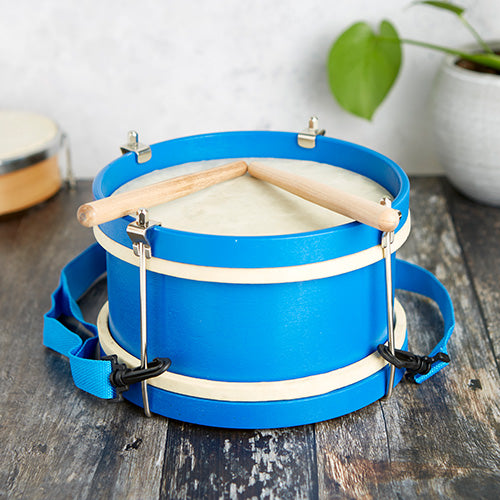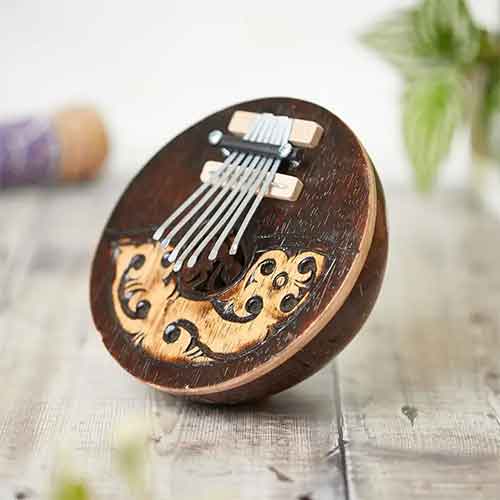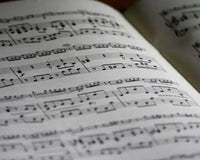The history and origin of marching drums
Marching drums, also known as field or military drums, have a fascinating history that dates back centuries. These drums originated in various cultures worldwide and were initially used for military purposes. They were used to communicate commands, maintain cadence, and boost morale on the battlefield. Over time, they evolved into essential instruments in military bands and parades, symbolizing strength, discipline, and patriotism.
The precise origins of marching drums are varied, with similar drum designs found in ancient civilizations such as Rome, Greece, and Egypt. However, they gained prominence in Europe during the Renaissance and Baroque periods, where they were extensively used in military formations and ceremonial events.
The uses of marching drums
Marching drums are versatile instruments used in various musical contexts beyond military settings. They are essential components of marching bands, drum corps, parades, and other outdoor performances, thanks to their powerful sound and rhythmic precision contribute to these events' dynamic energy and spectacle.
Historically, marching drums have served various vital purposes, evolving from their origins as military instruments. Here are some uses of marching drums. In ancient times, marching drums were used in warfare to relay commands, coordinate troop movements, and maintain rhythm and discipline on the battlefield. They played a crucial role in signaling tactics, conveying orders, and boosting morale among soldiers.
As civilizations developed, marching drums became symbols of power, prestige, and ceremony. They featured prominently in royal processions, coronations, and state ceremonies, adding grandeur and pomp to formal occasions. With the rise of military bands and civilian ensembles, marching drums transitioned into musical instruments for entertainment and cultural expression. They became integral to marching bands, drum corps, and orchestras, providing rhythmic accompaniment and dynamic energy to musical performances.
Historically, marching drums have been central to parades, festivals, and celebratory events worldwide. They create a festive atmosphere, encourage audience participation, and unite communities through shared musical experiences. In modern times, marching drums are widely used in music education and training programs, helping students develop essential musical skills such as rhythm, coordination, and teamwork while fostering discipline, focus, and creativity.
Marching drums are prominent in competitive drumming activities such as drumline battles, drum corps competitions, and marching band contests. In these high-energy events, drummers showcase their technical prowess, precision, and showmanship, pushing the boundaries of musical performance.
How to play the marching drum for beginners
For beginners, learning to play marching drums requires mastering fundamental techniques such as grip, posture, and rudiments. Proper stick control and drumming posture are essential for achieving precise and consistent sound production. Beginners should start with basic rudiments like single strokes, double strokes, and paradiddles before progressing to more complex patterns and exercises.
The marching drum buying guide
Consider factors such as drum size, material, and budget when purchasing a marching drum for beginners. Look for durable drums made from high-quality materials like wood or fiberglass, as they offer better sound projection and longevity. Choose a drum size appropriate for the player's age, height, and skill level.
Techniques
Advanced marching drum techniques include accents, flams, drags, rolls, and intricate stickings. These techniques enhance musical expression and performance quality, requiring precision, control, and coordination. Practicing with a metronome and gradually increasing tempo helps develop speed and accuracy in executing these techniques.
Facts
- The modern snare drum, an ordinary marching drum, originated from the military snare drum used in the 18th century.
- Marching drums come in various sizes, including snare, tenor, and bass drums, each serving specific roles in marching ensembles.
- Professional marching drummers often participate in competitive drum corps, showcasing their skills in intricate choreography and synchronized performances.
Marching drums hold a significant place in music history and continue to inspire musicians and audiences worldwide with their powerful rhythms and timeless appeal.
Where to buy a marching drum?

Investing in marching drums offers a range of benefits, including improved outdoor performance quality, skill development in rhythm and coordination, and opportunities for musical participation and community engagement. Check out Marching Drums here.
Marching Drums (Frequently Asked Questions)
What is the marching drum called?
Marching tenor drums, also known as "toms," are typically arranged in sets of 4-6 drums. These sets are often referred to by the number of drums in their configuration: "duos" (2 drums), "trios" (3 drums), "quads" (4 drums), "quints" (5 drums), and "sextets" (6 drums).
What are the three types of drum in a marching band?
It typically includes snare drums, bass drums, tenor drums, and cymbals. In the past, marching ensembles also commonly featured timpani and keyboard percussion instruments like glockenspiels and xylophones.
What makes the marching sound on the drum?
Marching snares are considerably deeper than those used in drum kits, nearly as deep as they are wide. This design produces a lower perceived pitch. The drum heads are extremely thick and made of durable materials such as Kevlar or thick Mylar.
What is a marching snare?
A marching snare is a larger and deeper snare drum compared to those used in drum kits. It produces a more resonant sound with its nylon or gut drum head. Often referred to as a "marching drum," it gets its name from its common use in marching bands and drumlines.
What is the history of marching percussion?
Marching percussion originated from military traditions, where drums were used to awaken soldiers in the morning, signal when to retire at night, and communicate maneuvers to soldiers in the field.









